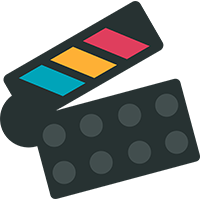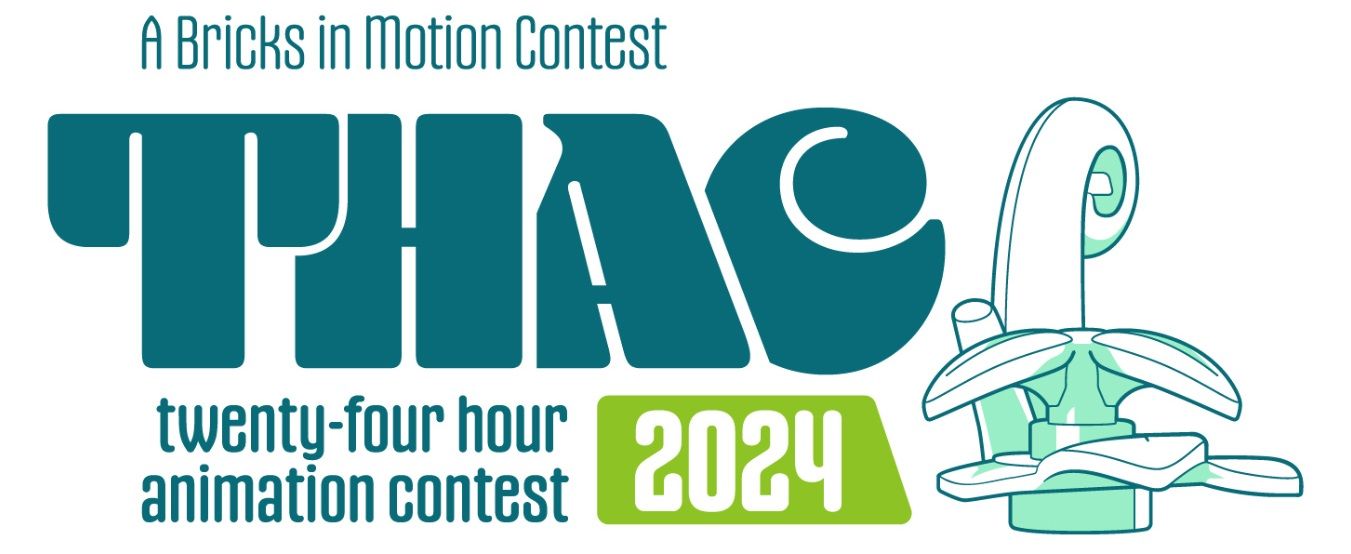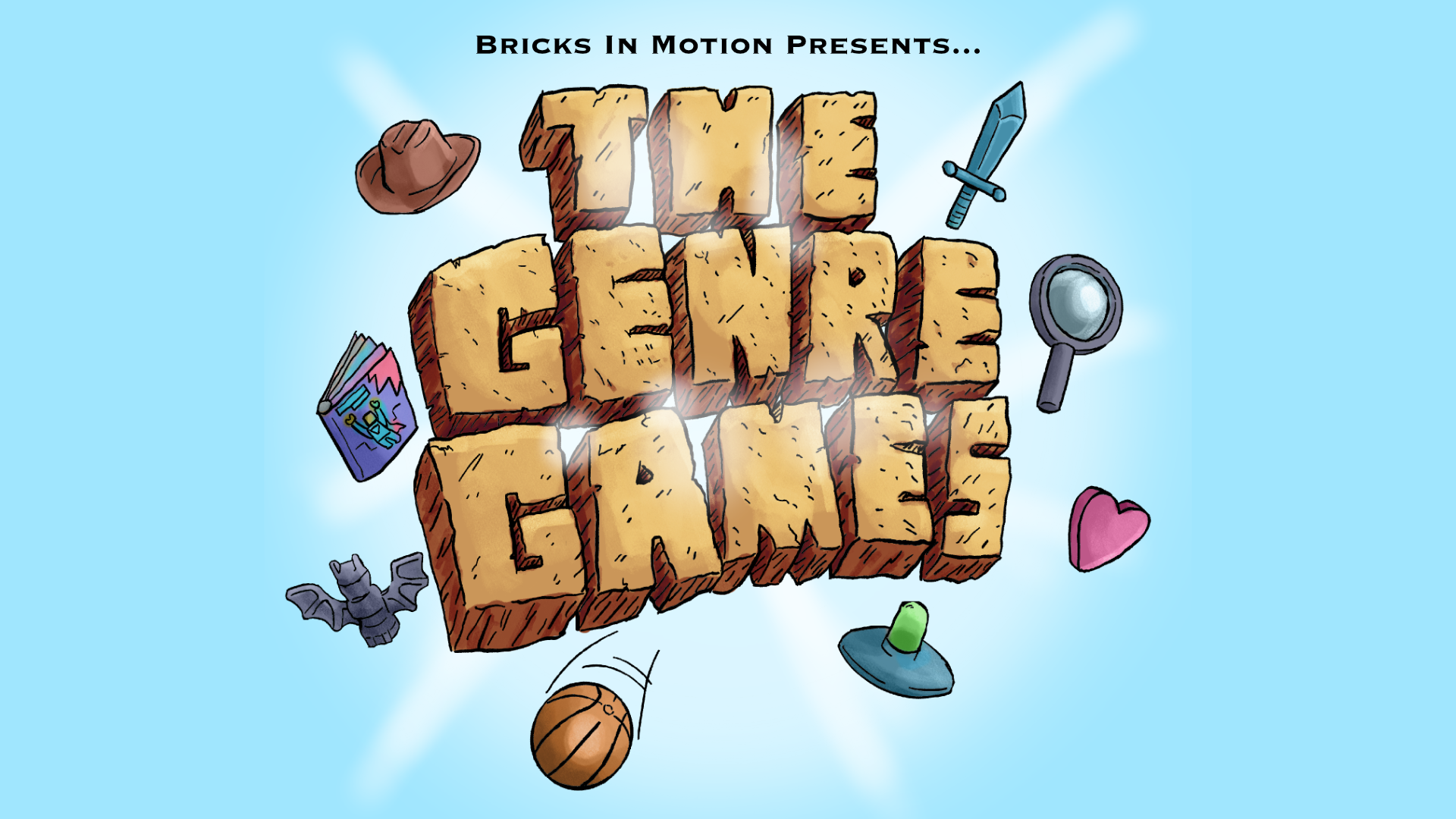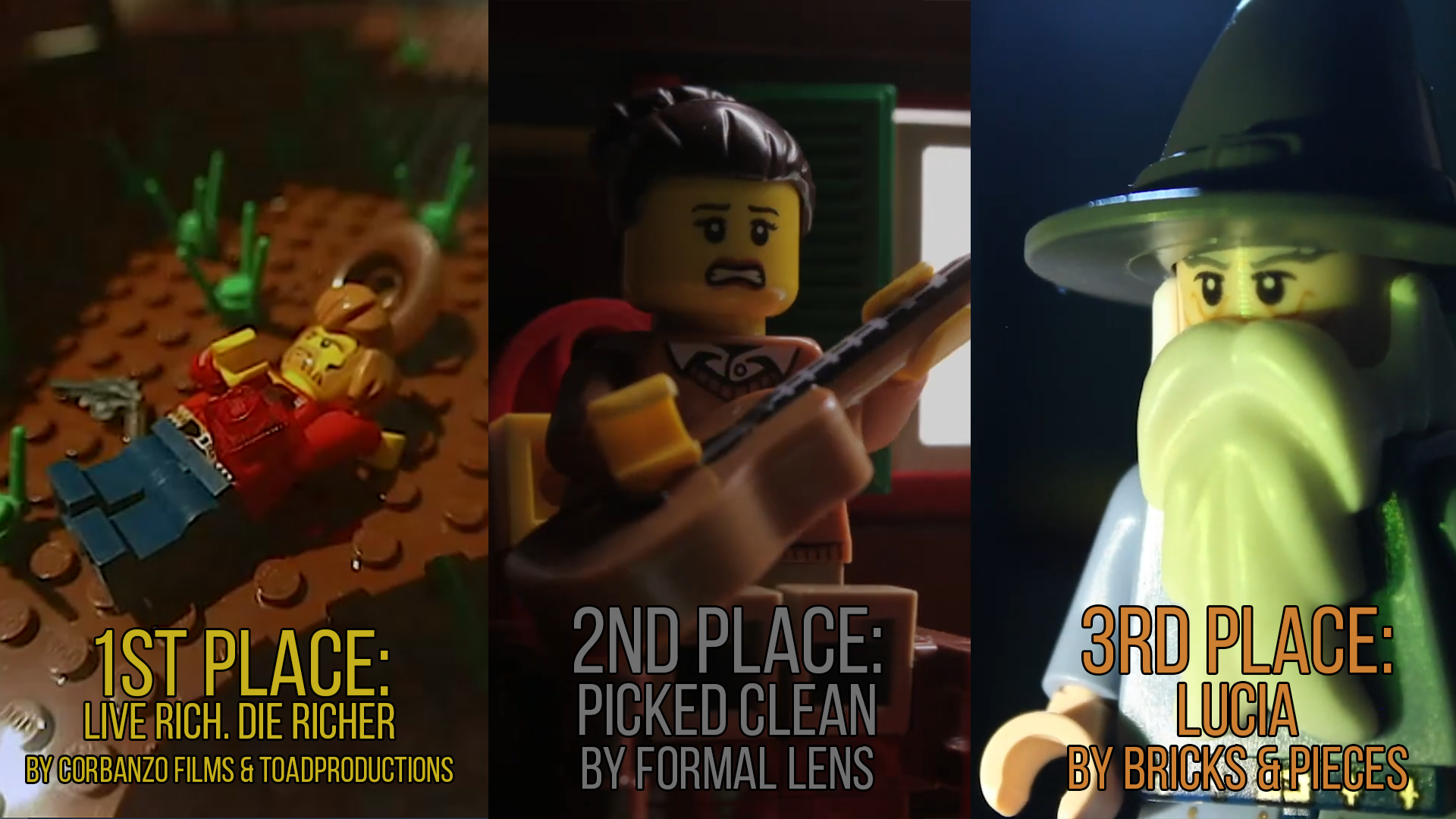HEY! I was thinking about this thread and I took some time and wrote a chapter for my brickfilming guide. This chapter looks at set building NOT from a LEGO builder's point of view (Because I'm kind of so-so at decent Lego techniques), but an interior designer's point of view, since, having studied it, I know more about interior design than building Lego sets. Below is information on form and function, and some tips, but I removed most of my section on color and all of the section on color scheming, because there a lot of illustrations that accompany it, and it is hard to explain without those.
---------------------------
CHAPTER 7
SET BUILDING
So you have your great story idea but you don't have a setting. Building sets is something we all face. I have studied interior designing. I can't tell you how to build a Lego set like a Lego master builder, and almost everyone else is more skilled at elaborate Lego construction than I... but I can show how to apply interior design techniques to Lego construction.
COLOR
The Color Wheel. The color wheel is one of the basic tenets of art. The primary colors in the color wheel are red, yellow, and blue, and are placed 120 degrees apart.
The secondary colors are made by mixing equal amounts of two primary colors. They are: orange (red + yellow), green (yellow + blue), and purple/violet (red + blue). On the color wheel, they are placed between the colors that are mixed to produce them.
When mixing equal parts of a primary color and its adjacent secondary color, one of six tertiary colors are produced:
red-orange, orange-yellow, yellow-green, blue-green, blue-violet, and red-violet. On a color wheel, these colors are
placed between the colors mixed to produce them.
The 12 color wheel is standard in art.
Colors can be lightened by adding white. A lightened color is called a tint. Adding black darkens a color. Darkened colors are called shades.
CHOOSING A BACKGROUND COLOR
"Neutral" colors work best for Lego sets, because they don't pop out. Colors that pop out cause the background to hog the attention. You don't want the set to be the main focus or detract from what's going on. The following colors are best to use:
White
Beige (what The Lego Group calls "Tan")
Yellow
Light Gray
Dark Gray
Medium Blue
Medium blue is my favorite Lego color and it's less rare than it used to be. The release of the Seaside House (2013) in the Creator series uses medium blue as the main color.
Using Other Colors. Well, maybe you find the above colors too drab an assortment. You'd like to make more colorful sets. That's fine. You can use brighter colors as accents. The Lego Group does this all the time. In fact, this has become my largest gripe with TLG. So many sets today are prominently gray pieces, with scant colorful pieces on an outer layer as an accent. Here's an example: from the Star Wars series, Anakin's Jedi Interceptor (2014). The set has over 200 pieces, but if you count them, only 18 to 24 pieces are yellow. Yet, at first glance, it looks like it's got more.
A drab-looking wall, for instance, can be accented by using a second, darker or bolder color for the first layer of bricks in the wall. This can represent moulding or a runner. It's also common to make the lower third of a room one color and the upper two-thirds another color. Selecting a combination of colors is called a Color Scheme.
FORM
Form is the appearance of architecture and interior design. Now, if you're just building a set, you don't need to have a degree in interior design or architecture. There's no need to be able to look at a building and be able to identify a Georgian era ornamentation or a Regency era stripe or a Neo-Victorian color scheme. ...But, you do want your buildings to make real life sense, even if in a fanciful environment.
There are three types of appearance: Rustic, Classical, and Modern. Roman columns, medieval castles, gargoyles, colonial buildings, and so on are examples of the Classical look. It is also noted for the use of the golden section, an aesthetic based on the proportion A:B = B:C; A+B=C, beginning with A=1 and B=2. The ratio becomes more accurate as the sequence progresses. It begins 1, 2, 3, 5, 8, 13, 21, and 34. Each number in the sequence is derived by adding the two numbers that preceded it. The golden section is found in nature, such as the spiral of snail shells, the fractal growth of crystals, the veins of leaves and mammals, and segmented patterns in starfish. America's Founding Fathers applied the golden section in Washington DC's architecture and street plan, as they used math and architecture to proclaim the natural beauty of God's handiwork. The most common representation of the golden section is 5:8. To use the golden section, make the slopes of buildings a base-to-height ration of 8:5 per side. Make the base-to height ratio of arches, rooms, the proportions of furniture, anything you wish, that 8:5 base-to-height ratio.
Rustic is the counterpart to Classical, just as folk music is the counterpart to Classical music. Rustic concepts were
more identifiable to the common person. Idiomatic to Rustic design are log cabins, unfinished wood, paneled walls, woven rugs, folk art, cobblestone, and re-appropriation of objects. The Amish, for instance, would paint used spools, tie ribbons around them and use them as quaint candle holders.
Modern, however, is radically different. Inspired by Frank Lloyd Wright's "Prairie Style" homes, Scandinavian architects embraced the style's open floor plans and wide shapes, and decided to strip away the centuries of sentimental ornamentation accumulated by classical and rustic design trends. Modern architecture focused on form and function, and discarded anything that didn't contribute to either. With modern design came pill-shaped seats and lamps, space-age and streamlined shapes, minimalist homes with floor-to-ceiling windows, Russian Constructivist artwork, the favoring of sheet rock over paneling, colorless schemes, industrial materials, even a breakdown of the entire rule book. Examples of modern interior form can be seen in the Ikea catalog (http://ikea.com).
This is a concise and super-simplified overview. It's just to give you a basic idea of the styles. When you design your set, think about the characters that will populate it. Are they traditional? Are they snobs? Are they living on the Moon in the future? Your basic design should reflect the type of story you're telling.
Motifs. A Motif is a basic shape or idea that is repeated in a design to unify it. Let's say that a room has arch-shaped
doorways. To unify the scheme, the arch shape would be repeated in lamp shades, picture frames, the curves under a tabletop, and so on. A fabric type or a pattern can be a motif. The motif is the simplest design element.
FUNCTION
Function refers to the usefulness of the elements of a building. Everything in your story's building should have some use. Tables are for placing things; cabinets are for storage, etc. Everything in your brickfilm's sets should do at least one of these two things:
Be used by the character.
Be a detail that contributes to the overall impression, realism, or theme of the building.
That's it. When adding anything to your set, ask if it does either of these two things. If it doesn't, eliminate it.
You may be forced to further eliminate more if you find that your set is getting too crowded to make your characters move around. If this is the case, only eliminate things from category 2, keeping the elements most crucial to your story.
Your other alternative is to increase the size of your set, if it's practical.
HOW TO DESIGN YOUR SET
Consider these seven principles while building your set. Hopefully, they will improve its quality.
1) Choose a color scheme. You have nearly limitless color scheme options with the framework presented in the COLOR section of this chapter in "The Holding Our Own Guide To Brickfilming" (not posted here because there are a lot of images that accompany the text). Note that the dominant color in your scheme may have psychological implications. Lighter colors make a room look spacious, while dark colors are claustrophobic. Red and purple evoke amorous feelings. Pale blue and green are soothing. That's why hospital rooms are often mint green. Pink and yellow cause a psychological nervous effect in experimental studies. Yellow and bright red together also are uncomfortable colors. This psychology of color has led to fast food places to use these colors in their schemes; they want you to buy the product and feel like you wish to leave as soon after the purchase as possible. Now you know why Ronald McDonald wears the colors that he does. Take the significance of your colors into account.
2) Decide on Classical, Rustic, or Modern style. Rustic is perfect for high fantasy. Classical is excellent for stories of nobility. Modern is great for science fiction. You may have a personal preference. In real life, I love modern, while my mother loves rustic. Imagine trying to reconcile these vastly different tastes in the same home!
3) Collect pictures of the style you wish to build. On the Internet, visit http://bing.com/images to search for images. Use simple but detailed keywords. For ideas on innovative modern indoor shopping malls, type, "modern indoor shopping mall" or “modern mall interior”. Find elements you like from various pictures and see if they work together well in your set. Look for motifs that are common. If you like two ideas but don't think they will work well together because the motifs are different, try changing a motif on one to match the other. Look also at other brickfilmer's sets for additional ideas. Don't steal their sets; just use them for inspiration.
4) Consider the details. Is the character obsessed with television? Make it the focal point of the set. Is the character alcoholic? You'll need a lot of bottles and a place to store them. Is the character dirt poor? Use drab colors and few pieces of furniture. It's hard to accurately reproduce a real home or building. Unless you're trying for
an exact replica of something, what you're building is an impressionistic representation of real life. So you need to decide what props are most important to the characters, and include them in the set.
Example: Iron Man's Mansion isn't an exact replica of Tony Stark's home from Iron Man 3. It provides an impression of the form of the exterior, while the interior depicts the idea of a kitchen and his lab without creating a brick by brick match. The Lego designers chose the parts of the building they thought were most important to represent the basic idea of the home.
5) Make it roomy. Minifigures use up more space than real people and can't really squeeze like people can. Make sure that your characters can not only move around freely, but also give your sets room enough to be able to get your hands in there and move things around without bumping the set. My first set has a few cramped spaces and every time a character moves through there, I'm bumping furniture.
This limitation makes impressionism even more critical to your design.
6) Don't waste bricks. If the camera's only seeing the set from the front, you don't have to design and build the back. You don't have to build walls that are never going to be seen, ceilings, and so on. The back of the set, which isn't being photographed, doesn't have to be perfect. I don't know how many bricks facing the back of the sets I built had the words "Pizza" or "Police" on them. If I'm out of 1x1 bricks, I used a 1x2 with the second half of the brick jutting out the back. With practice, a well-built set will give the impression that there's more off screen. I recall a story about a director who kept trying to film Marilyn Monroe and was adamant on getting all of her hair in every shot. She questioned it and the photographer said he didn't want to cut her hair off. She replied that if the viewer didn't realize that she had more hair off-screen, they weren't smart enough to watch movies, or something to that effect. I don't know if it's a true story, but it's amusing, and the point is that the human mind completes what it can't see. This psychological tendency to auto-complete broken visual stimuli is called "closure".
Speaking of closure, strategically placing a few of the "brick bricks", introduced in 2012, is sufficient to make something look its made from bricks. There's no need to build an entire wall from these bricks, if you like the brick brick. The viewer's mind uses closure to give the impression of a brick-built home, and it saves you from spending 50 cents to $1 on the secondary market per piece.
7) To make furniture look soft, use curved bricks. The Lego group is known for using the 1x2x 4/3 curved brick with one stud for the edges of beds and couches. This brick makes bed sheets look "fluffy".
CONCLUSION
Hopefully, these tools will help you visually realize an idea you have, and make your set both practical and aesthetically appealing.
https://vimeo.com/channels/holdingourown http://holding-our-own.tumblr.com"None practice tolerance less frequently than those who most loudly preach it."










